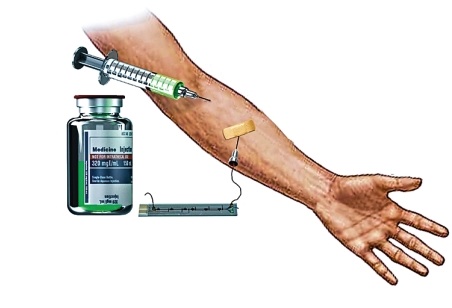 A team from the University of California Santa Barbara has developed a technique for continuous monitoring of the saturation of drugs in the bloodstream. While technology has existed to monitor saturation at intervals, and to continuously monitor certain specific substances like glucose, this is the first potentially modular, continuous sensor.
A team from the University of California Santa Barbara has developed a technique for continuous monitoring of the saturation of drugs in the bloodstream. While technology has existed to monitor saturation at intervals, and to continuously monitor certain specific substances like glucose, this is the first potentially modular, continuous sensor.
This could allow doctors to more quickly and accurately determine the right dosing for a sensitive medication in a personal, customized way. The sensor is called MEDIC, which stands for microfluidic electrochemical detector for in vivo continuous monitoring.
"MEDIC’s real-time measurement capabilities could establish a new paradigm in therapeutic drug monitoring, with immediate applications in acute care," Brian Scott Ferguson and his co-authors wrote in a paper published in Science Translational Medicine. "As reported in the literature, drug dosing strategies based on pharmacokinetic models using physiological parameters such as sex, mass, or body surface area often fail to capture clinically important inter- and intrapatient variability. This may, in part, account for the inconsistencies often observed in response to therapy, wherein patients receiving similar doses of DOX, for example, exhibit markedly different toxic and therapeutic responses."
The team has tested the sensor in rats and on a simulated bloodstream, but has not yet done a human trial. In theory, the small biosensor would be hooked up to a probe, which is inserted into a vein. The probe consists of a molecule called an aptamer attached to a gold electrode, with a filter to keep out blood cells. In rats, scientists were able to detect doxorubicin, a cancer drug, and kanamycin, an antibiotic.
Continuous glucose monitoring, though still relatively new, is shaping up to be a game changer in diabetes management. It's one of the key pieces in the development of an "artificial pancreas" for patients with diabetes.
Unlike diabetes, which is a chronic condition, the MEDIC team's initial testing was for acute conditions. They only tested the probe for a few hours at a time, rather than for days or weeks. But longer term monitoring is only one of the team's future plans.
"We also foresee numerous opportunities for extending the capabilities of MEDIC, for example, simultaneously measuring the drug being administered as well as the biomarkers indicative of the patient’s response to that drug by integrating multiple probes into one device," they write. "This would facilitate a closed feedback loop between the drug and the patient’s response, which can then be adjusted to continuously deliver an optimal therapeutic dose in real time."
One area where this might be especially helpful, the authors suggest, is in regulating drugs for organ transplants, which are tricky to get right and potentially risky if incorrectly prescribed.















